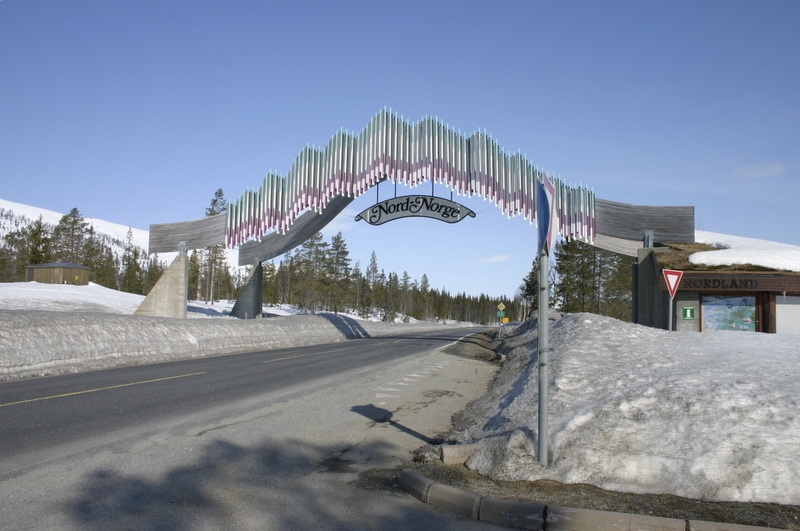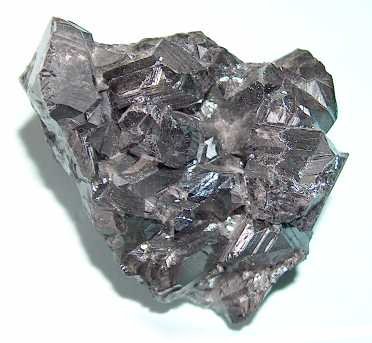|
Skorovatn
Skorovatn is a village in the municipality of Namsskogan in Trøndelag county, Norway. The old Skorovas Gruber mine is here, but it closed in 1984. Skorovatn is located right on the border with the municipality of Røyrvik, just south of the lake Tunnsjøflyan and the large lake Tunnsjøen. Skorovatn is about east of the main European route E6 highway that crosses Namsskogan. Skorovatn Chapel is located in the village. Mine The ''Skorovas Gruber'' mine was the first in Norway to exploit a sulphide ore deposit and produced zinc and copper. The mine discharged tailings In mining, tailings are the materials left over after the process of separating the valuable fraction from the uneconomic fraction (gangue) of an ore. Tailings are different to overburden, which is the waste rock or other material that overlie ... into a nearby lake, but the contamination from this process has been deemed relatively slight. The mine closed in 1984. Before its closing, virtually every ... [...More Info...] [...Related Items...] OR: [Wikipedia] [Google] [Baidu] |
Skorovatn Chapel
Skorovatn Chapel ( no, Skorovatn kapell) is a parish church of the Church of Norway in Namsskogan municipality in Trøndelag county, Norway. It is located in the old mining village of Skorovatn. It is one of three churches for the Namsskogan parish which is part of the Namdal prosti (deanery) in the Diocese of Nidaros. The brown, wooden church with a red roof was built in a long church style in 1965 using plans drawn up by the architect Arne Aursand. The church seats about 170 people. History The church was built in 1965 to serve the mining village of Skorovatn. The church construction was financed by Elkem and the municipality. The church was consecrated on 5 September 1965 by the Bishop Tord Godal. The local mine closed in 1984, so since then, there are only a few residents left in the area, so the chapel is not used as regularly as it used to. It is also occasionally used for concerts. See also *List of churches in Nidaros This list of churches in Nidaros is a list of the ... [...More Info...] [...Related Items...] OR: [Wikipedia] [Google] [Baidu] |
Namsskogan
Namsskogan is a municipality in Trøndelag, Norway. Namsskogan is located in the upper part of the long Namdalen valley region. The administrative centre of the municipality is the village of Namsskogan. Other villages in the municipality include Brekkvasselv, Smalåsen, Skorovatn, and Trones. The village of Namsskogan lies along the river Namsen in the northern part of the municipality. The European route E6 highway runs through the village. The municipality is the 64th largest by area out of the 356 municipalities in Norway. Namsskogan is the 344th most populous municipality in Norway with a population of 818. The municipality's population density is and its population has decreased by 10.7% over the previous 10-year period. General information The municipality of Namsskogan was established on 1 July 1923 when it was separated from the large municipality of Grong. Initially, the population of Namsskogan was 469. The municipal boundaries have not changed since. On 1 ... [...More Info...] [...Related Items...] OR: [Wikipedia] [Google] [Baidu] |
Norway
Norway, officially the Kingdom of Norway, is a Nordic country in Northern Europe, the mainland territory of which comprises the western and northernmost portion of the Scandinavian Peninsula. The remote Arctic island of Jan Mayen and the archipelago of Svalbard also form part of Norway. Bouvet Island, located in the Subantarctic, is a dependency of Norway; it also lays claims to the Antarctic territories of Peter I Island and Queen Maud Land. The capital and largest city in Norway is Oslo. Norway has a total area of and had a population of 5,425,270 in January 2022. The country shares a long eastern border with Sweden at a length of . It is bordered by Finland and Russia to the northeast and the Skagerrak strait to the south, on the other side of which are Denmark and the United Kingdom. Norway has an extensive coastline, facing the North Atlantic Ocean and the Barents Sea. The maritime influence dominates Norway's climate, with mild lowland temperatures on the se ... [...More Info...] [...Related Items...] OR: [Wikipedia] [Google] [Baidu] |
Tunnsjøflyan
Tunnsjøflyan is a lake in the municipality of Røyrvik (and a very small part of Namsskogan) in Trøndelag county, Norway. The lake drains out into the large lake Tunnsjøen or is a lake in the municipalities of Røyrvik and Lierne in Trøndelag county, Norway. The lake lies just south of the large lake Limingen, and just west of the border with Sweden. It is above sea level and has a volume of . The deepest par ... to the east. See also * List of lakes in Norway * Tunnsjødal Hydroelectric Power Station References Lakes of Trøndelag Røyrvik Namsskogan {{Trøndelag-geo-stub ... [...More Info...] [...Related Items...] OR: [Wikipedia] [Google] [Baidu] |
Tailings
In mining, tailings are the materials left over after the process of separating the valuable fraction from the uneconomic fraction (gangue) of an ore. Tailings are different to overburden, which is the waste rock or other material that overlies an ore or mineral body and is displaced during mining without being processed. The extraction of minerals from ore can be done two ways: placer mining, which uses water and gravity to concentrate the valuable minerals, or hard rock mining, which pulverizes the rock containing the ore and then relies on chemical reactions to concentrate the sought-after material. In the latter, the extraction of minerals from ore requires comminution, i.e., grinding the ore into fine particles to facilitate extraction of the target element(s). Because of this comminution, tailings consist of a slurry of fine particles, ranging from the size of a grain of sand to a few micrometres. Mine tailings are usually produced from the mill in slurry form, which i ... [...More Info...] [...Related Items...] OR: [Wikipedia] [Google] [Baidu] |
Copper
Copper is a chemical element with the symbol Cu (from la, cuprum) and atomic number 29. It is a soft, malleable, and ductile metal with very high thermal and electrical conductivity. A freshly exposed surface of pure copper has a pinkish-orange color. Copper is used as a conductor of heat and electricity, as a building material, and as a constituent of various metal alloys, such as sterling silver used in jewelry, cupronickel used to make marine hardware and coins, and constantan used in strain gauges and thermocouples for temperature measurement. Copper is one of the few metals that can occur in nature in a directly usable metallic form ( native metals). This led to very early human use in several regions, from circa 8000 BC. Thousands of years later, it was the first metal to be smelted from sulfide ores, circa 5000 BC; the first metal to be cast into a shape in a mold, c. 4000 BC; and the first metal to be purposely alloyed with another metal, tin, to create ... [...More Info...] [...Related Items...] OR: [Wikipedia] [Google] [Baidu] |
Zinc
Zinc is a chemical element with the symbol Zn and atomic number 30. Zinc is a slightly brittle metal at room temperature and has a shiny-greyish appearance when oxidation is removed. It is the first element in group 12 (IIB) of the periodic table. In some respects, zinc is chemically similar to magnesium: both elements exhibit only one normal oxidation state (+2), and the Zn2+ and Mg2+ ions are of similar size.The elements are from different metal groups. See periodic table. Zinc is the 24th most abundant element in Earth's crust and has five stable isotopes. The most common zinc ore is sphalerite (zinc blende), a zinc sulfide mineral. The largest workable lodes are in Australia, Asia, and the United States. Zinc is refined by froth flotation of the ore, roasting, and final extraction using electricity ( electrowinning). Zinc is an essential trace element for humans, animals, plants and for microorganisms and is necessary for prenatal and postnatal development. It ... [...More Info...] [...Related Items...] OR: [Wikipedia] [Google] [Baidu] |
Sulphide Ore
Sulfide (British English also sulphide) is an inorganic anion of sulfur with the chemical formula S2− or a compound containing one or more S2− ions. Solutions of sulfide salts are corrosive. ''Sulfide'' also refers to chemical compounds large families of inorganic and organic compounds, e.g. lead sulfide and dimethyl sulfide. Hydrogen sulfide (H2S) and bisulfide (SH−) are the conjugate acids of sulfide. Chemical properties The sulfide ion, S2−, does not exist in aqueous alkaline solutions of Na2S. Instead sulfide converts to hydrosulfide: :S2− + H2O → SH− + OH− Upon treatment with an acid, sulfide salts convert to hydrogen sulfide: :S2− + H+ → SH− :SH− + H+ → H2S Oxidation of sulfide is a complicated process. Depending on the conditions, the oxidation can produce elemental sulfur, polysulfides, polythionates, sulfite, or sulfate. Metal sulfides react with halogens, forming sulfur and metal salts. :8 MgS + 8 I2 → S8 + 8&nbs ... [...More Info...] [...Related Items...] OR: [Wikipedia] [Google] [Baidu] |
Kunnskapsforlaget
Kunnskapsforlaget () is a Norwegian publishing company based in Oslo. Kunnskapsforlaget was established in 1975, as a partnership between H. Aschehoug & Co. (W. Nygaard) and Gyldendal Norsk Forlag. The purpose was to co-operate on publishing encyclopaedias and dictionaries. The first volume of Store norske leksikon (SNL) was published in 1978. A total of four editions was published (the last one in 2004), before the online version was transferred to Institusjonen Fritt Ord og Sparebankstiftelsen DnB in 2011. Kunnskapsforlaget is the largest dictionary publisher in Norway. They publish both printed books, and digital dictionaries that are available through the online service Ordnett (launched in 2004). Their main languages are English and Norwegian, but they also have dictionaries in 21 other languages. In September 2018, Gyldendal Norsk Forlag became the single owner of the company. As of 2018, the publisher has eight full-time employees. The CEO is Thomas Nygaard Thomas m ... [...More Info...] [...Related Items...] OR: [Wikipedia] [Google] [Baidu] |
Store Norske Leksikon
The ''Great Norwegian Encyclopedia'' ( no, Store Norske Leksikon, abbreviated ''SNL''), is a Norwegian-language online encyclopedia. The online encyclopedia is among the most-read Norwegian published sites, with more than two million unique visitors per month. Paper editions 1978–2007 The ''SNL'' was created in 1978, when the two publishing houses Aschehoug and Gyldendal merged their encyclopedias and created the company Kunnskapsforlaget. Up until 1978 the two publishing houses of Aschehoug and Gyldendal, Norway's two largest, had published ' and ', respectively. The respective first editions were published in 1907–1913 (Aschehoug) and 1933–1934 (Gyldendal). The slump in sales for paper-based encyclopedias around the turn of the 21st century hit Kunnskapsforlaget hard, but a fourth edition of the paper encyclopedia was secured by a grant of ten million Norwegian kroner from the foundation Fritt Ord in 2003. The fourth edition consisted of 16 volumes, a t ... [...More Info...] [...Related Items...] OR: [Wikipedia] [Google] [Baidu] |
European Route E6
European route E6 ( no, Europavei 6, sv, Europaväg 6, or simply E6) is the main north-south thoroughfare through Norway as well as the west coast of Sweden. It is long and runs from the southern tip of Sweden at Trelleborg, into Norway and through almost all of the country north to the Arctic Circle and Nordkapp. The route ends in Kirkenes close to the Russian border. Route From south to north, E6 runs through Trelleborg, Malmö, Helsingborg, Halmstad, Gothenburg, Svinesund in Sweden, before crossing the border at the Svinesund Bridge into Norway. It then passes Halden, Sarpsborg, Moss to the capital Oslo. North of this, it passes by Gardermoen, Hamar, Lillehammer, Dombås, Oppdal, Melhus to Trondheim. Beyond Trondheim, the E6 meets Stjørdal, Verdal, Steinkjer, Grong, Mosjøen, Mo i Rana, Saltdal, Fauske and Hamarøy towards Bognes, where there is a ferry crossing over the Tysfjorden to Skarberget. It then runs through on via Narvik, Setermoen, Nordkjosbotn, Skib ... [...More Info...] [...Related Items...] OR: [Wikipedia] [Google] [Baidu] |




